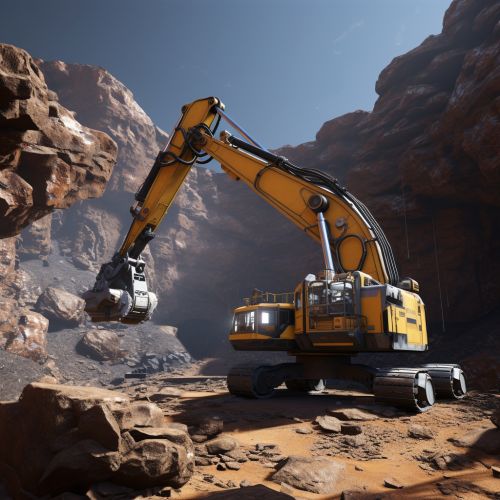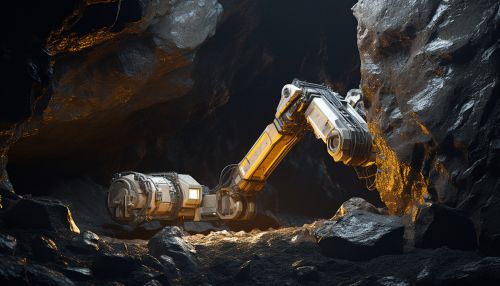In-situ resource utilization
Overview
In-situ resource utilization (ISRU) is a strategy employed in space exploration where materials found in space are used to replace those that would otherwise be brought from Earth. The concept is critical for long-term space missions, as it reduces the amount of payload that a spacecraft needs to carry, thereby reducing the cost and complexity of the mission. ISRU can involve the extraction and processing of raw materials into useful products, such as rocket fuel, breathable air, or construction materials.


History
The concept of ISRU has been around since the early days of space exploration. The idea was first proposed in the 1960s, during the Apollo program, when scientists began to consider the possibility of using lunar resources to support human missions to the Moon. However, it was not until the 1980s and 1990s that the concept began to gain traction, with the advent of new technologies and the increasing interest in long-term human space exploration.
Principles
ISRU involves several key principles. First, it requires the identification and characterization of resources in space. This involves the use of remote sensing technologies, such as spectrometers and radars, to detect and analyze the composition of planetary bodies. Once resources have been identified, they must be extracted and processed into useful products. This can involve a variety of techniques, depending on the type of resource and its location. For example, water ice on the Moon or Mars can be extracted and processed into hydrogen and oxygen, which can be used for rocket fuel and life support systems.
Techniques
There are several techniques that can be used for ISRU, depending on the type of resource and its location. For example, Regolith - the layer of loose, fragmented material that covers solid bedrock - can be processed to extract useful materials such as oxygen, silicon, and metals. This can be done through a variety of methods, including heating, chemical reactions, or electrolysis. Another technique is the extraction of water from ice deposits, which can be found on the Moon, Mars, and other planetary bodies. This can be done through heating or sublimation, and the water can then be processed into hydrogen and oxygen.
Applications
ISRU has a wide range of applications in space exploration. One of the most important is the production of rocket fuel. By extracting water from lunar or Martian ice and processing it into hydrogen and oxygen, it is possible to produce rocket fuel on-site, reducing the amount of fuel that needs to be brought from Earth. This can significantly reduce the cost and complexity of space missions. Other applications include the production of breathable air and the manufacturing of construction materials for habitats or other structures.
Challenges
Despite its potential benefits, ISRU also presents several challenges. One of the main challenges is the need for advanced technologies to extract and process resources in space. These technologies must be lightweight, energy-efficient, and capable of operating in harsh environments. Another challenge is the need for detailed information about the location and composition of resources in space. This requires extensive exploration and characterization of planetary bodies, which can be time-consuming and expensive.
Future Directions
The future of ISRU is closely tied to the future of human space exploration. As we plan for long-term missions to the Moon, Mars, and beyond, ISRU will become increasingly important. Current research is focused on developing new technologies for resource extraction and processing, as well as exploring new potential sources of resources. For example, asteroids are thought to be rich in valuable resources, and there is growing interest in the possibility of asteroid mining.
